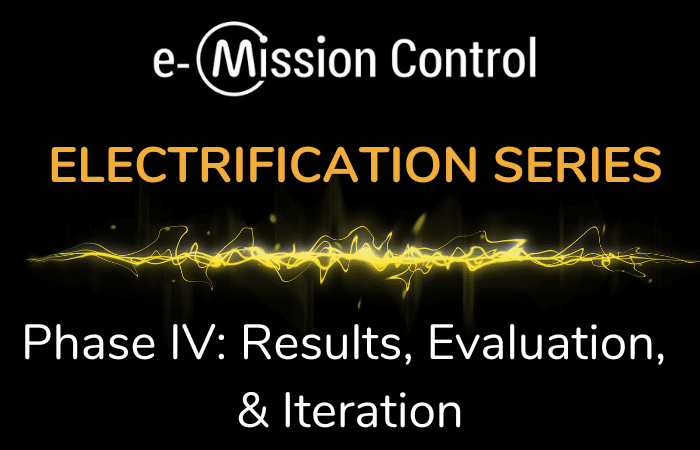
As we approach the final stage in our electrification timeline, we come to Phase 4: Results. This phase represents the culmination of all the hard work and planning that went into electrifying your fleet. The results phase typically takes around three months to complete and involves four key objectives: training drivers and fleet staff on electric equipment, evaluating performance and use and iteration.
Here are a few reasons why drivers may require retraining to operate electric vehicles (EVs) since they function differently than conventional gasoline-powered vehicles:
Evaluating the use and performance of an EV transportation fleet is critical for several reasons. It allows fleet managers to assess whether the investment in electric vehicles is paying off in terms of cost savings and emissions reductions. By evaluating the use and performance of the vehicles, fleet managers can determine whether the vehicles are meeting their expected range and performance requirements, and identify any areas where improvements can be made.
This step can help fleet managers optimize their operations. By collecting data on vehicle usage, charging times, and energy consumption, fleet managers can identify areas where they can reduce costs and improve efficiency. For example, they may identify opportunities to reduce idle time, improve charging infrastructure, or adjust vehicle routes to optimize charging and reduce range anxiety.
Measuring performance can help identify areas where additional training may be necessary. For example, if drivers are experiencing range anxiety or struggling to operate the vehicles efficiently, additional training or support may be necessary to address these issues.
Finally, evaluating the use and performance of electric vehicles can help fleet managers identify areas where technology improvements may be necessary. Electric vehicle technology is rapidly evolving, and fleet managers need to stay abreast of these developments to ensure that their operations remain competitive and efficient. By evaluating the performance of their electric vehicles, fleet managers can identify areas where technology improvements may be necessary, such as more efficient battery technology, improved charging infrastructure, or more sophisticated vehicle telematics.
Iteration is critical in the electrification transition phase 4 because it allows for a continuous improvement process to take place. As with any complex project or transition, it is difficult to anticipate and plan for every potential challenge or obstacle that may arise. By conducting regular evaluations and making adjustments based on the results, stakeholders can ensure that the electrification transition is as successful and effective as possible.
In the case of fleet electrification, iteration allows for the optimization of infrastructure placement, charging speeds, and other critical factors. It also enables stakeholders to adjust their strategies to account for changes in technology, customer behavior, and other external factors that may impact the success of the transition. By taking an iterative approach, stakeholders can continually fine-tune their approach and ensure that the transition is meeting its intended goals and objectives.
Furthermore, iteration allows stakeholders to learn from their mistakes and build on their successes. By reviewing the results of previous evaluations and making appropriate adjustments, stakeholders can avoid repeating the same mistakes and capitalize on the strategies and tactics that have proven to be effective.
On behalf of e-Mission Control, we would like to express our sincere gratitude to all our readers who have followed our electrification timeline blog series. We hope that the information and insights shared throughout the series have been helpful and informative to you.
As you may recall, the blog series was focused on four phases of electrification: Pre-planning, Planning and budgeting, Implementation, and Results. Each phase was designed to provide a roadmap for organizations looking to electrify their operations.
We hope that the series has been beneficial to you in your efforts to electrify your fleet. We encourage you to reach out to our team at e-Mission Control for any further guidance and support in your electrification journey. Thank you again for following our blog series, and we wish you all the best in your electrification efforts.